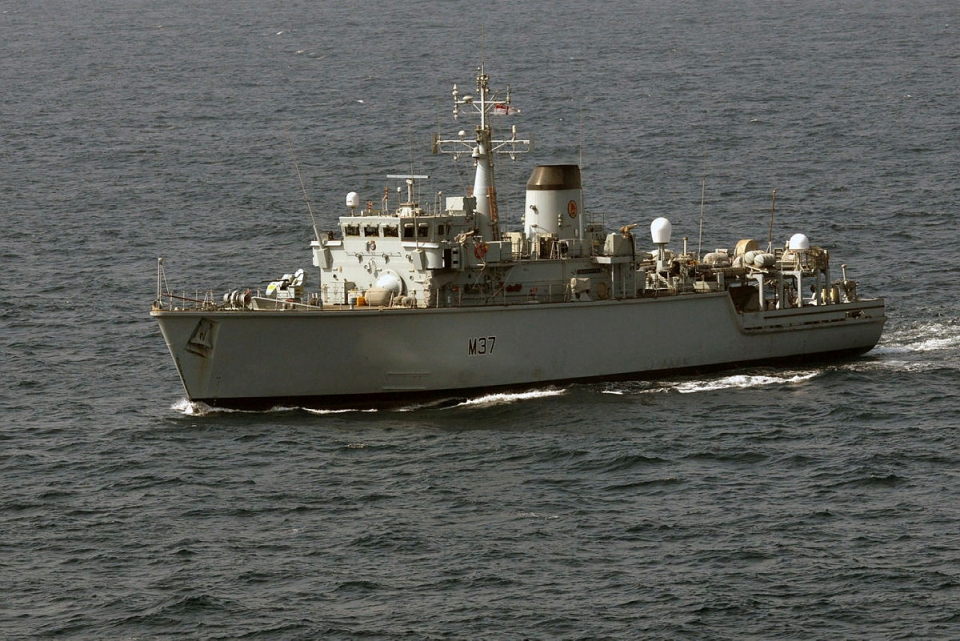The Royal Navy minehunters HMS Bangor and HMS Chiddingfold were involved in a collision in the port of Bahrain. The latter was sailing backwards to berth while the HMS Bangor was already moored at the quay.
Rear Admiral Edward Ahlgren OBE, Commander Operations, has said there were no casualties in the collision. The HMS Chiddingfold suffered only minor damage and is still operational. The HMS Bangor, however, has suffered a whole to the hull and it is as yet unlcear how long the ship will be out of service.
‘Why this happened is still to be established,’ says Rear admiral Ahlgren. ‘We train our people to the highest standards and rigorously enforce machinery safety standards, but unfortunately incidents of this nature can still happen. I assure you that a full and thorough investigation is already under way and any changes in procedure that could prevent further incidents will be rapidly implemented. In the meantime the UK will continue to play a key part in ensuring the safety of merchant shipping in the region.’
Also read: Damen and Royal Navy cooperate on remote monitoring
Operation Kipion
The HMS Bangor and HMS Chiddingfold are part of Operation Kipion. Operation Kipion is the UK’s permanent naval presence in the Gulf. The two minehunters are part of a three-strong squadron of minehunters charged with this task. Other vessels that are part of the operation are Type 23 Frigate HMS Lancaster and Bay-class landing ship dock RFA Cardigan Bay.
HMS Chiddingfold is a Hunt-class mine countermeasures vessel of Britain’s Royal Navy that has been in service since 1984. Sandown-class minehunter HMS Bangor was commissioned in 1999.
Picture (top): HMS Chiddingfold (by the Royal Navy).
Also read: Royal Navy receives first vessel to protect underwater infrastructure








